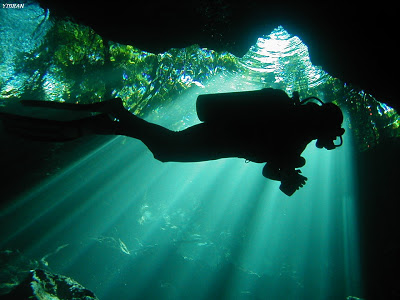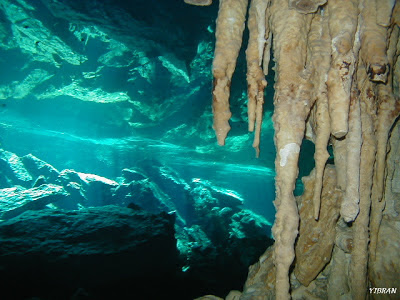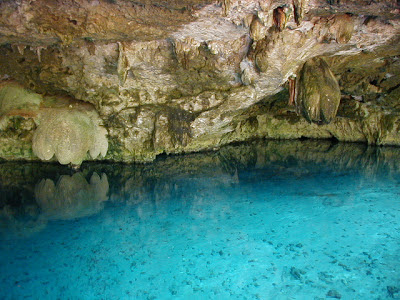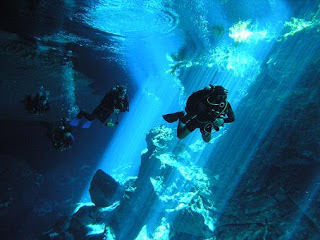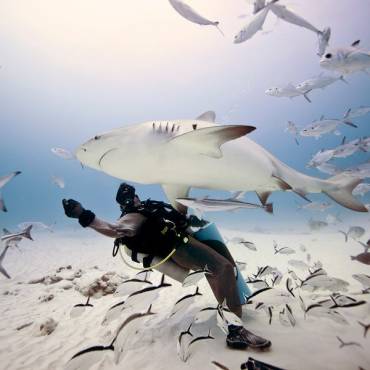What is a cenote?
The Yucatan Peninsula is a huge limestone platform where water runs through underground caves. Part of this land has fallen, creating sinkholes called cenotes, which give access to underground bodies of water. Since 1980, hundreds of cenotes have been explored and mapped by cave divers. Today the three longest underwater cave systems in the world are in the Riviera Maya.
The Yucatan Peninsula was covered by a prehistoric sea; which caused a lot of calcium in the area. This formed large limestone deposits underground. For centuries, rainwater gradually seeped through the layers of soil and eroded these deposits. The erosion slowly formed cavities which were filled with water.
Diving in caverns has certain risks and some limitations since it differs from the sea this diving takes place in a closed environment.
Some important limitations to know are:
- Carry at least one flashlight per diver
- Stay within the limits of natural light
- Do not exceed a distance of more than 60 m in a linear direction at the next opening
- Maximum 4 divers per guide
Important terminology
Spelotema: a secondary mineral deposit that forms in caves, usually calcite.
Stalactite: A spelothema hanging down from a ceiling or wall
Stalagmite: A espelotema which projects vertically upwards from the floor
Haloclina: the point at which salt water and fresh water meet.
With Phantom Divers you can book your dive in cenote every day. It is a unique experience which can only be done in the Peninsula of Yucatan, Mexico. We have daily departures to different cenotes, and you can always ask for special tours to a cenote of your choice.
The post Experience diving in the Cenotes appeared first on Phantom Divers.

